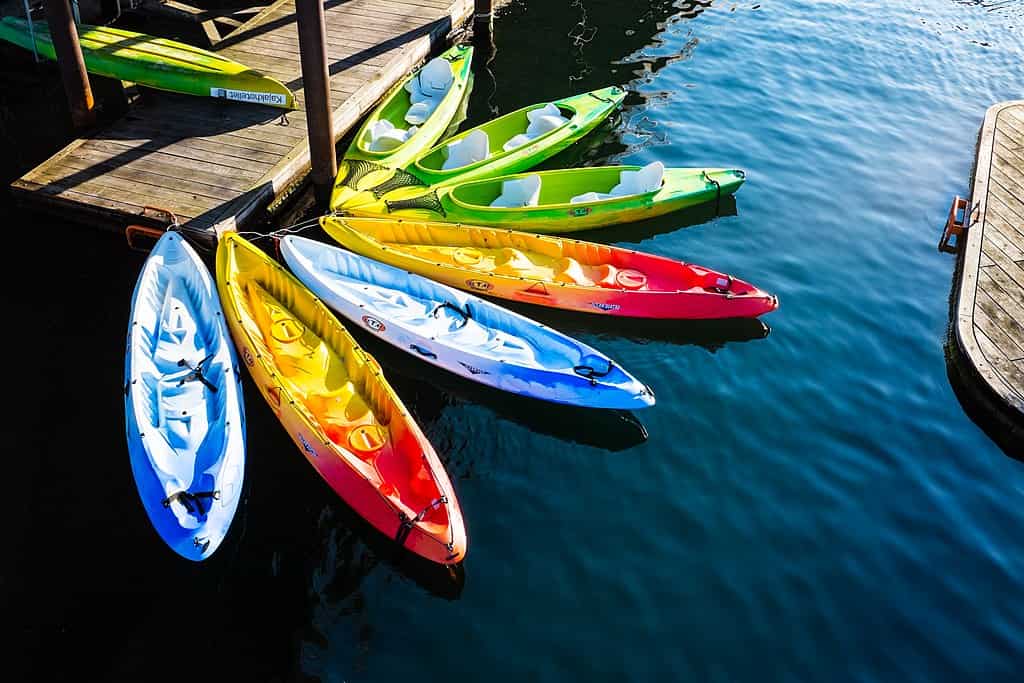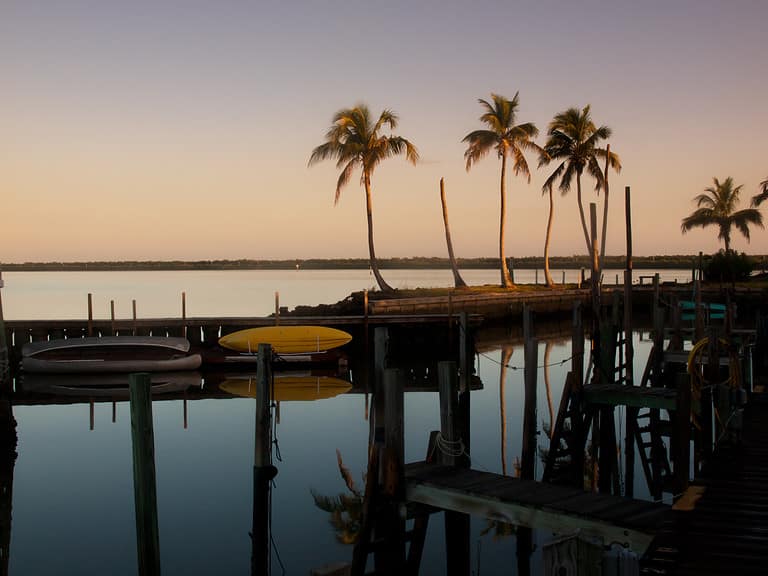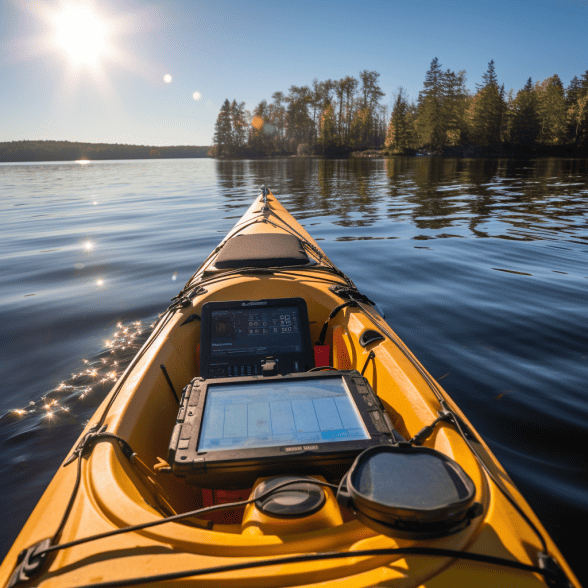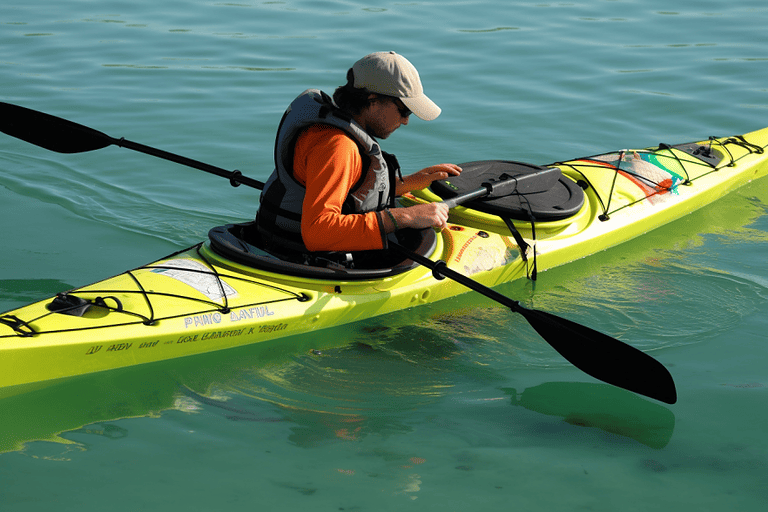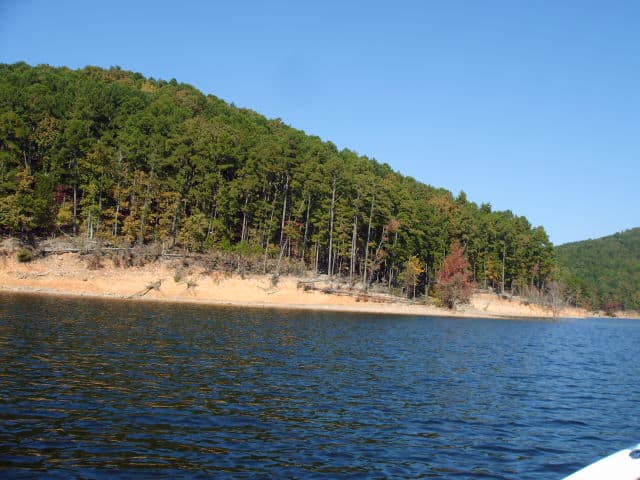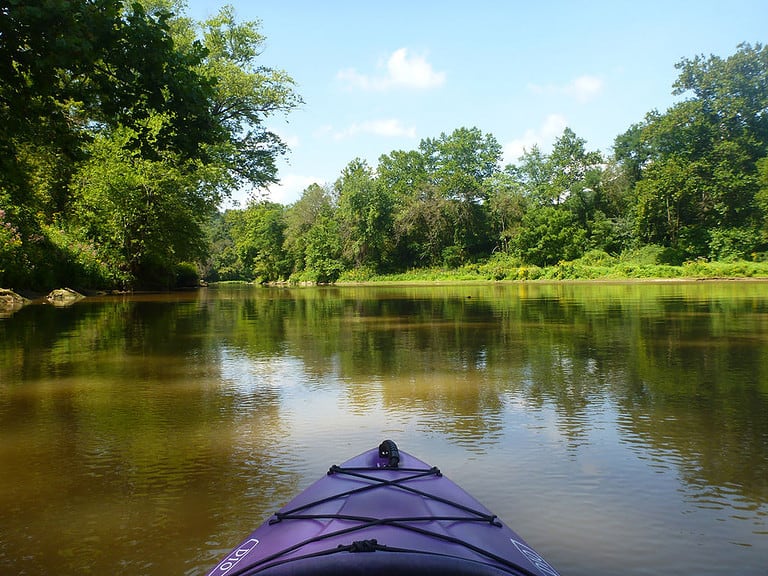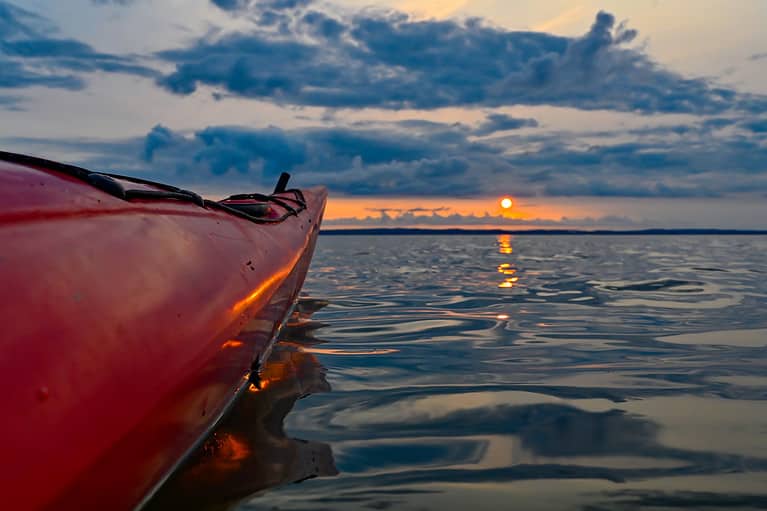Understanding Kayak Classifications: Recreational, Touring, And Sea Kayaks
Have you ever felt the call of the open water, yearning to explore and connect with nature? If so, then understanding kayak classifications is essential for your aquatic adventures. Just like there are different types of cars for various terrains, kayaks come in distinct categories as well: recreational, touring, and sea kayaks. These classifications serve as a guide to help you select the perfect vessel that suits your needs and desires on the water.
Recreational kayaks are ideal for calm lakes and slow-moving rivers, providing stability and ease of use for beginners. Touring kayaks are designed for longer trips and offer enhanced speed and maneuverability. And if you’re seeking thrilling expeditions in rough waters or out at sea, sea kayaks are built to withstand challenging conditions while maintaining control.
In this article, we will dive deeper into each kayak classification’s key features and help you choose the right one for your journey. So buckle up (or paddle up) as we embark on an exciting voyage of understanding kayak classifications together!
Key Takeaways To Understanding Kayak Classifications
- Recreational kayaks are designed for calm waters and offer stability, ease of use, and various sizes and styles.
- Touring kayaks are ideal for long-distance paddling in open waters, providing speed, efficiency, ample gear storage, and excellent control and stability.
- Sea kayaks are specifically designed for open water conditions, with a longer and narrower shape for greater speed and efficiency. They require skill and experience and often include safety measures such as storage compartments, adjustable footrests, and rudders or skegs.
- When choosing a kayak, factors such as length and width, cockpit design and seating options, and hull shape and stability, should be considered based on skill level and intended purpose.
Recreational Kayaks
Recreational kayaks are perfect for those who want to experience the thrill and joy of paddling in calm waters, immersing themselves in nature’s beauty. These kayaks are designed with stability and ease of use in mind, making them ideal for beginners or casual paddlers. One of the great things about recreational kayaks is that they come in a variety of sizes and styles, allowing you to choose one that suits your specific needs and preferences.
Regarding kayak accessories, recreational kayaks have plenty of options available. From comfortable seats and adjustable footrests to storage compartments and cup holders, these accessories can enhance your overall experience on the water. Whether you’re planning a leisurely day trip or a weekend adventure, having the right accessories can make all the difference.
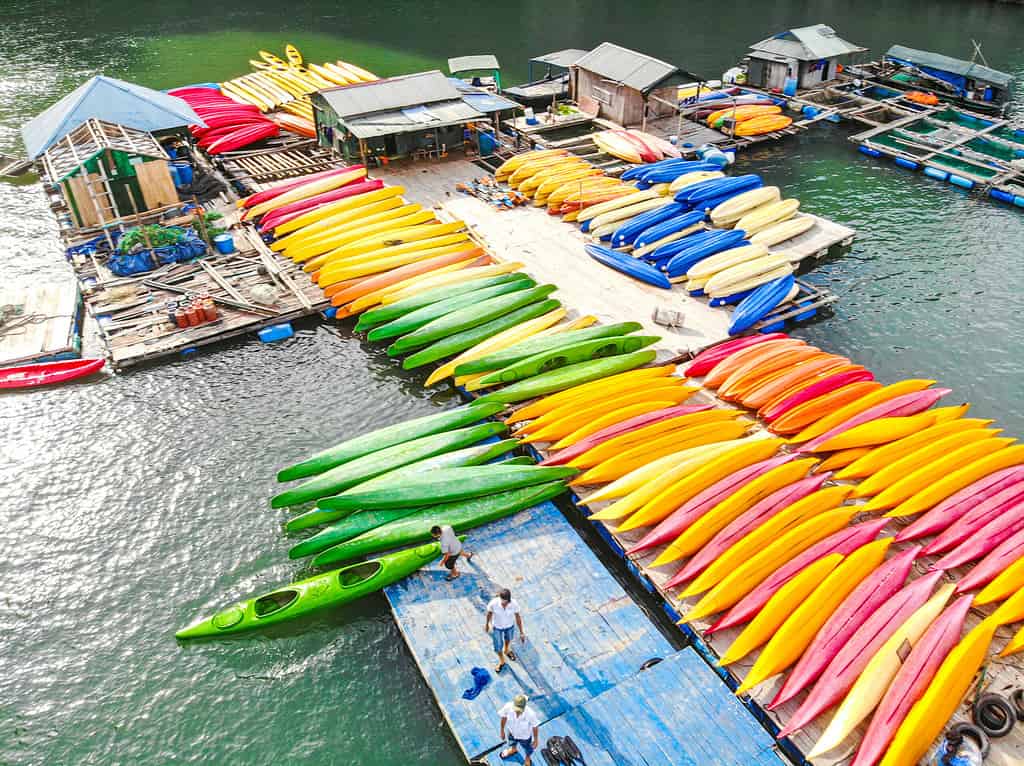
Regarding kayak safety, recreational kayaks typically feature a wide hull design that provides excellent stability. This makes them less prone to tipping over than other kayak types. Additionally, most recreational kayaks have built-in buoyancy chambers that help keep them afloat even if they do capsize.
Transitioning into touring kayaks: If you’re looking for more advanced features and capabilities, such as increased speed and longer trips on open water, then touring kayaks might be more suitable for you. These kayaks are designed with efficiency in mind and often come equipped with rudders or skegs to improve tracking ability. So let’s dive deeper into touring kayaks and discover all they have to offer!
Touring Kayaks
Touring kayaks are perfect for long-distance paddling due to their design and features. They are specifically designed for open waters and challenging conditions, making them ideal for experienced paddlers who enjoy exploring lakes, rivers, and even the ocean. One of the main advantages of touring kayaks is their ability to offer more speed and efficiency compared to recreational kayaks, allowing paddlers to cover longer distances with less effort.
Perfect for Long-Distance Paddling
Ideal for covering vast distances, these sleek and nimble sea kayaks will effortlessly carry you through the waters like a graceful dolphin in search of adventure. Their long-distance endurance and ample gear storage capacity make them the perfect companions for extended paddling journeys. Whether embarking on a multi-day expedition or exploring new coastal areas, these touring kayaks have got you covered.
Designed for open waters and challenging conditions, these sea kayaks boast exceptional stability and maneuverability. Their streamlined hulls make them efficient and fast, gliding effortlessly through waves. Equipped with comfortable seating and adjustable footrests, they ensure a comfortable journey even during long hours on the water.
These touring kayaks also feature ample storage space to accommodate all your camping gear, making them ideal for overnight trips. From extra clothing to food supplies, you can bring everything you need without compromising on performance.
Transitioning into the next section about ‘designed for open waters and challenging conditions,’ these sea kayaks provide excellent control and stability in rough seas or strong currents.
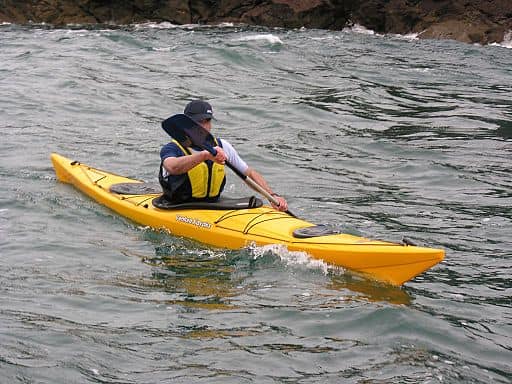
Designed for Open Waters and Challenging Conditions
Navigate through treacherous waters with ease and confidence, as these sleek and nimble vessels were specifically designed to conquer open waters and challenging conditions. Whether you’re paddling through choppy waves or battling strong currents, a sea kayak is built to handle it all. Here are some reasons why they excel in such demanding environments:
- Enhanced Stability: The wider hull design provides exceptional stability, allowing you to maintain balance even in rough seas.
- Efficient Tracking: With their longer length and narrow shape, sea kayaks track straighter, making them easier to maneuver through unpredictable waters.
- Increased Buoyancy: Equipped with watertight compartments, these kayaks offer added buoyancy for extra safety during capsizes or heavy swells.
- Superior Durability: Constructed from tough materials like fiberglass or polyethylene, sea kayaks are built to withstand the rigors of open water adventures.
With their ability to navigate challenging conditions seamlessly, sea kayaks offer more speed and efficiency on the water.
Offers More Speed and Efficiency
Get ready to zoom through the water like a pro in these sleek, lightning-fast vessels that were practically made for speed and efficiency. When it comes to kayaking, speed and maneuverability are key factors, especially for those who enjoy covering long distances or participating in races. Recreational kayaks may be great for calm waters, but if you’re looking to take on more challenging conditions or explore open waters, a touring kayak is your best bet. These kayaks are designed with a longer and narrower shape, allowing them to slice through the water effortlessly. One of the benefits of a lightweight kayak is that it requires less effort to paddle, making it easier to maintain higher speeds without getting tired quickly. With their streamlined design and efficient paddling capabilities, touring kayaks offer an exhilarating experience on the water. As we move into the next section about sea kayaks…
Sea Kayaks
Immerse yourself in the exhilarating world of sea kayaks and let the waves carry you on an unforgettable adventure. Sea kayaks are designed for open water conditions, making them perfect for exploring coastlines, lakes, and oceans. These versatile boats are longer and narrower than recreational or touring kayaks, giving them greater water speed and efficiency.
Regarding paddling techniques, sea kayaking requires a certain level of skill and experience. The longer length of sea kayaks allows for more efficient strokes, while their narrow design enhances maneuverability. It’s important to learn proper paddling techniques to navigate through various water conditions effectively.
Safety measures are crucial when venturing out into open waters with a sea kayak. It’s essential to wear a personal flotation device (PFD) at all times and have the necessary safety equipment on board. Sea kayakers should also know about weather conditions, tidal currents, and potential hazards during their journey.
Sea kayaks offer several key features to consider before embarking on your next adventure. These include storage compartments for gear and supplies, adjustable footrests for comfort during long trips, and rudders or skegs that help with tracking in windy conditions. Additionally, some sea kayaks have built-in navigation systems or compasses to assist with route planning.
As we delve into the next section about key features to consider when choosing a sea kayak, you’ll discover even more exciting aspects that will enhance your overall experience on the water.
Key Features to Consider
When considering a sea kayak, there are several key features to consider. Firstly, the length and width of the kayak will greatly impact its performance and stability in different water conditions. Secondly, the design of the cockpit and seating options can greatly affect comfort and ease of use. Lastly, the hull shape and stability of the kayak will determine how well it tracks through the water and handles waves or currents. These factors should be carefully considered when choosing a sea kayak that suits your specific needs and preferences.
Kayak Length and Width
You’ll find that longer and wider kayaks provide more stability and storage space, making them perfect for longer trips or carrying extra gear. Regarding kayak maneuverability, shorter and narrower kayaks are easier to handle and navigate in tight spaces. However, they may sacrifice some stability compared to their longer counterparts. It’s important to consider your skill level and the type of water you’ll be paddling in when choosing the length and width of your kayak.
Another factor to consider is the weight capacity of the kayak. Longer and wider kayaks generally have a higher weight capacity, allowing you to bring along more gear or accommodate larger individuals comfortably.
Transitioning into the next section about cockpit design and seating options, it’s essential to find a kayak that fits your body size and provides a comfortable seating arrangement for those long hours on the water.
Cockpit Design and Seating Options
To truly appreciate the comfort and convenience of your kayaking experience, it’s crucial to explore the various cockpit designs and seating options available. Here are four key factors to consider when selecting a kayak cockpit:
- Cockpit ergonomics: Look for a design that allows you to comfortably enter and exit the kayak without feeling cramped. A spacious cockpit with ample legroom can enhance your overall paddling experience.
- Seat padding: Opt for a kayak that offers sufficient seat padding to ensure long-lasting comfort during extended trips. A well-padded seat can prevent discomfort and reduce fatigue, allowing you to focus on enjoying your time on the water.
- Adjustable seating options: Consider kayaks with adjustable seats that allow you to customize your position according to your preferences and paddling style. This flexibility ensures optimal support and stability while maximizing your paddling efficiency.
- Backrest support: Look for kayaks with ergonomic backrests that provide proper lumbar support, reducing strain on your lower back during long hours of paddling.
With these considerations in mind, let’s now delve into the next section about hull shape and stability, where we’ll discover how they affect your kayaking performance.
Hull Shape and Stability
The shape of the kayak’s hull and its stability are like the foundation and balance that determine your kayaking performance. The hull design is crucial in how the kayak handles different water conditions. There are two main aspects to consider regarding hull shape: primary stability and secondary stability.
Primary stability refers to how stable the kayak feels when you’re sitting still or paddling in calm waters. Kayaks with a flatter, wider hull tend to have higher primary stability, making them more suitable for beginners or those who prefer a steady ride.
On the other hand, secondary stability refers to how stable the kayak feels when leaning or turning. Kayaks with a narrower, rounded hull excel in this aspect, allowing for more maneuverability and agility on rougher waters.
To help visualize these differences in hull shape and stability, here’s a table:
| Hull Shape | Primary Stability | Secondary Stability |
| Flat | High | Low |
| Rounded | Low | High |
Understanding these characteristics will guide you towards choosing the right kayak for your preferences and skill level without feeling overwhelmed by options.
Choosing the Right Kayak for You
When it comes to choosing the right kayak for you, it’s important to consider your skill level and intended purpose. Different types of kayaks are designed for various activities, such as recreational paddling, touring, or sea kayaking. Each type has its own unique features and benefits that cater to different needs.
Recreational kayaks are perfect for beginners or those looking for a laid-back experience on calm waters like lakes or slow-moving rivers. They typically have a wider hull shape, offering excellent stability and maneuverability. These kayaks are often made from durable materials such as polyethylene or fiberglass, ensuring they can withstand any bumps or scrapes encountered during leisurely outings.
Touring kayaks are designed for longer trips and exploring different water bodies. They have a narrower hull shape compared to recreational kayaks, allowing them to glide through the water more efficiently. Touring kayaks also offer increased storage space for gear and provisions needed during extended journeys. These boats are commonly constructed with lightweight materials like fiberglass or carbon fiber composite, making them easier to paddle over long distances.
Sea kayaks are specifically built for open water conditions like oceans or large lakes. They feature a longer length and sleeker design than other types of kayaks, enabling them to handle rough waves and strong currents effectively. Sea kayaks are often made from high-performance materials like Kevlar or polyethylene with added reinforcements for durability in challenging environments.
Understanding the different types of kayak materials is crucial when selecting the right kayak for your skill level and intended purpose. Whether you’re seeking relaxation on calm waters, embarking on adventurous tours, or braving the open seas, there’s a perfect kayak out there waiting for you!
Frequently Asked Questions
What are the weight and length limitations for recreational kayaks?
When it comes to weight and length limitations for recreational kayaks, there are certain considerations to keep in mind. Recreational kayaks typically have a weight capacity ranging from 250 to 400 pounds, depending on the specific model. As for length, they usually range between 9 and 12 feet. It’s important to note that, while convenient for storage and transport, inflatable kayaks often have lower weight capacities than their hard-shell counterparts. However, they offer the advantage of being easily portable and lightweight.
Can touring kayaks be used in rougher waters or only on calm lakes and rivers?
Touring kayaks can be used in rougher waters, but there are advantages and disadvantages. Touring kayaks are designed to handle choppy conditions, with their longer length providing better tracking and stability. However, they may be more challenging to maneuver in tight spaces or strong currents. If you want to modify a recreational kayak for rougher waters, consider adding a skeg or rudder for improved tracking and stability. Also, make sure to practice proper safety measures and have appropriate gear when venturing into rough waters.
Are sea kayaks suitable for beginners or should they only be used by experienced paddlers?
Sea kayaks can be suitable for beginners but require some experience and knowledge to handle safely. Pros of using sea kayaks include their stability in rough waters and their ability to cover long distances. However, there are cons as well. Sea kayaks can be more challenging to maneuver and may require additional skills like self-rescue techniques. It’s important for beginners to receive proper training and gradually build up their skills before venturing out in a sea kayak.
What are some common safety features to look for when choosing a kayak?
When choosing a kayak, it’s important to consider common safety features and how to properly use them. Look for features such as buoyancy aids, deck lines, and grab handles. These can help in case of capsizing or emergencies. It’s also crucial to know how to use these features effectively. Practice techniques like self-rescue and re-entry before venturing out on the water. By understanding and utilizing these safety features, you can confidently enjoy your kayaking adventures.
Can I use a recreational kayak for overnight camping trips or is a touring kayak better suited for that purpose?
For overnight camping trips, a touring kayak is better suited than a recreational kayak. While a recreational kayak is great for fishing and short paddles, it may need more storage space or stability for longer journeys. Touring kayaks are designed for long distances and have ample storage compartments to carry camping gear. They also offer better tracking and stability in rougher waters, ensuring a comfortable and safe experience during your camping adventure.
Conclusion
In conclusion, understanding the different classifications of kayaks is essential in order to choose the right one for your needs. Recreational kayaks are like playful dolphins, perfect for calm waters and short trips. Conversely, tourist kayaks are like graceful swans, designed for longer journeys with storage space and stability. Lastly, sea kayaks resemble mighty whales, built to withstand rough ocean conditions and with advanced features. Remember to consider key features such as size, weight capacity, and maneuverability when making your decision. Happy paddling!

